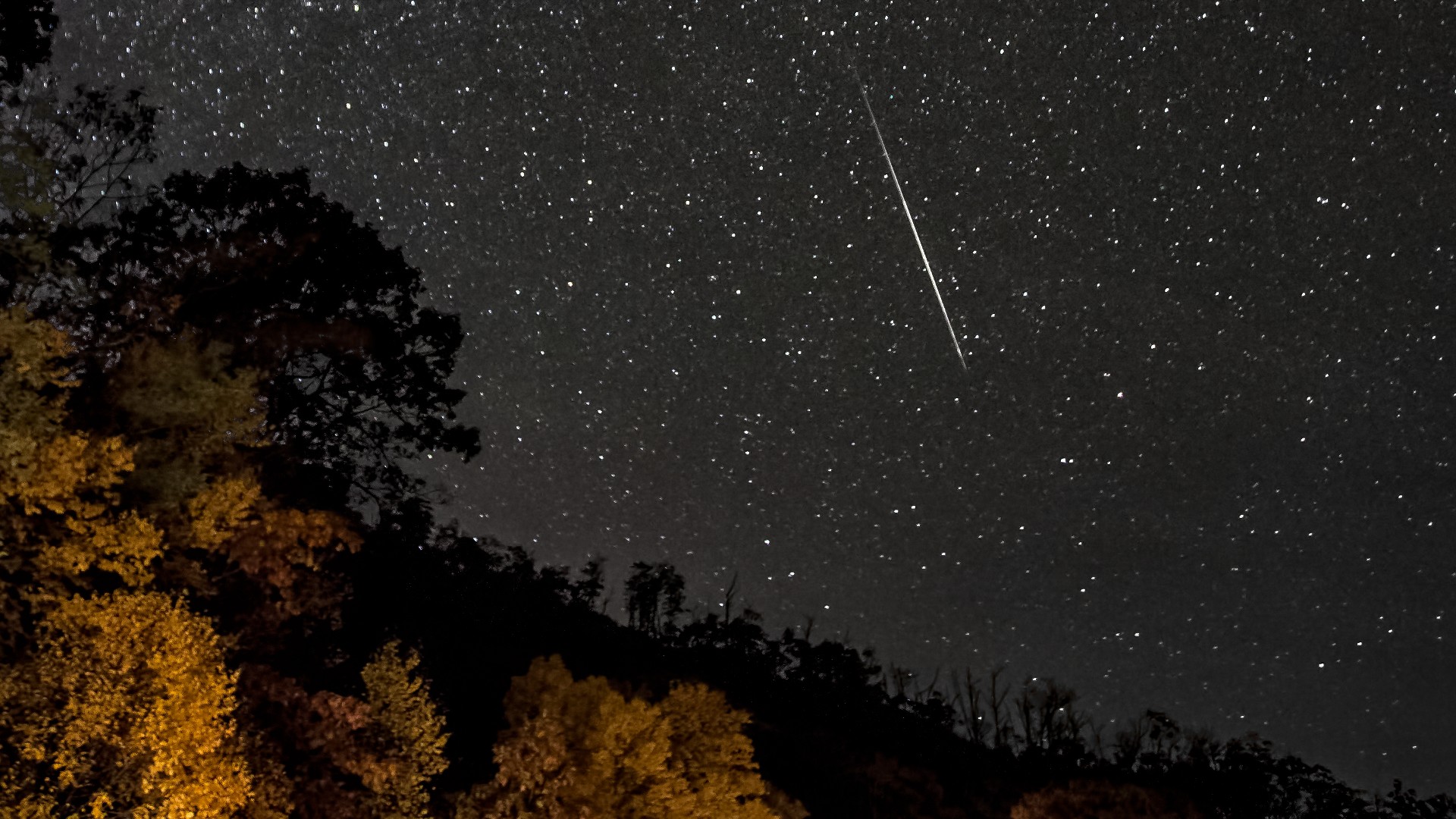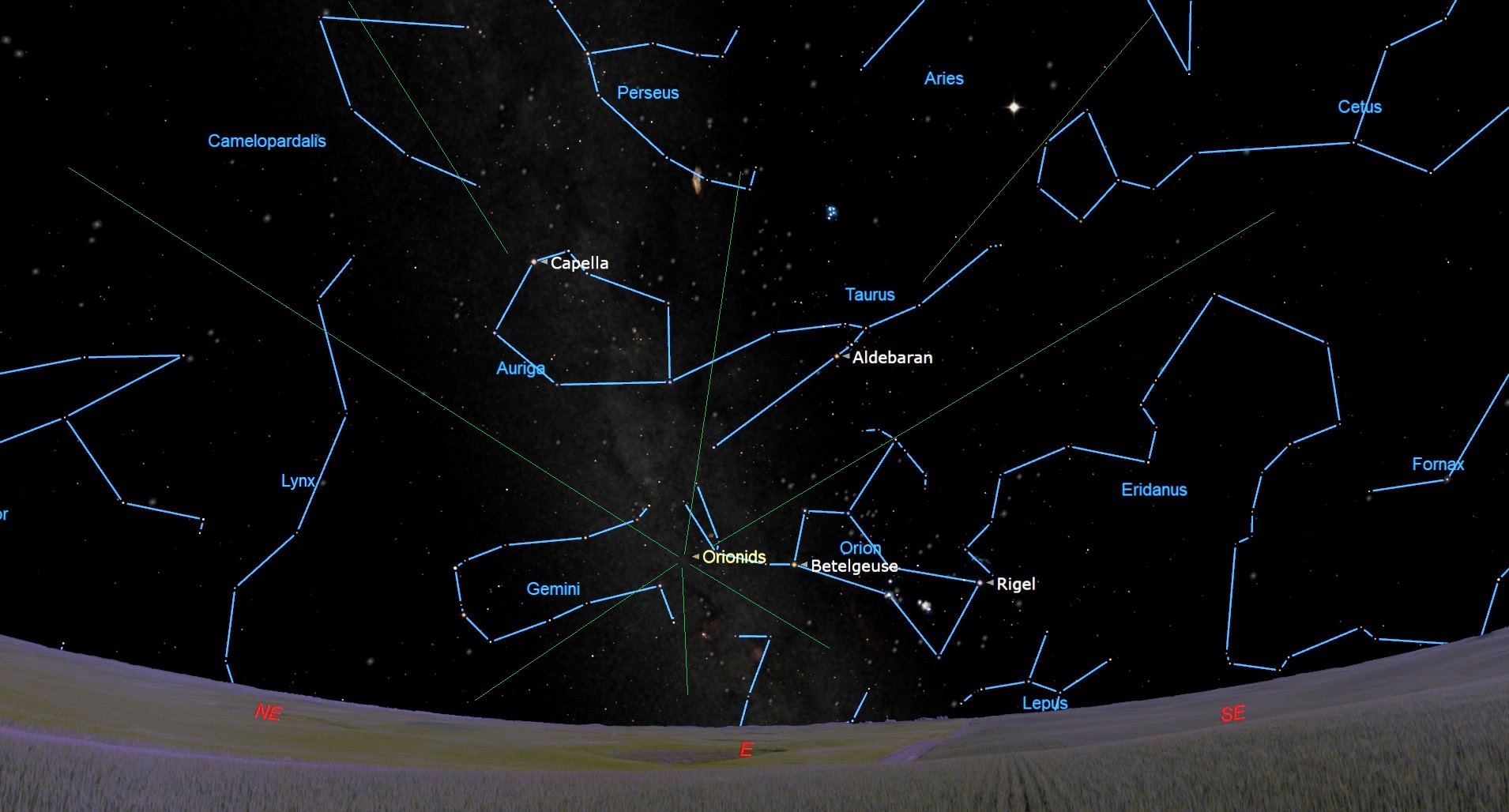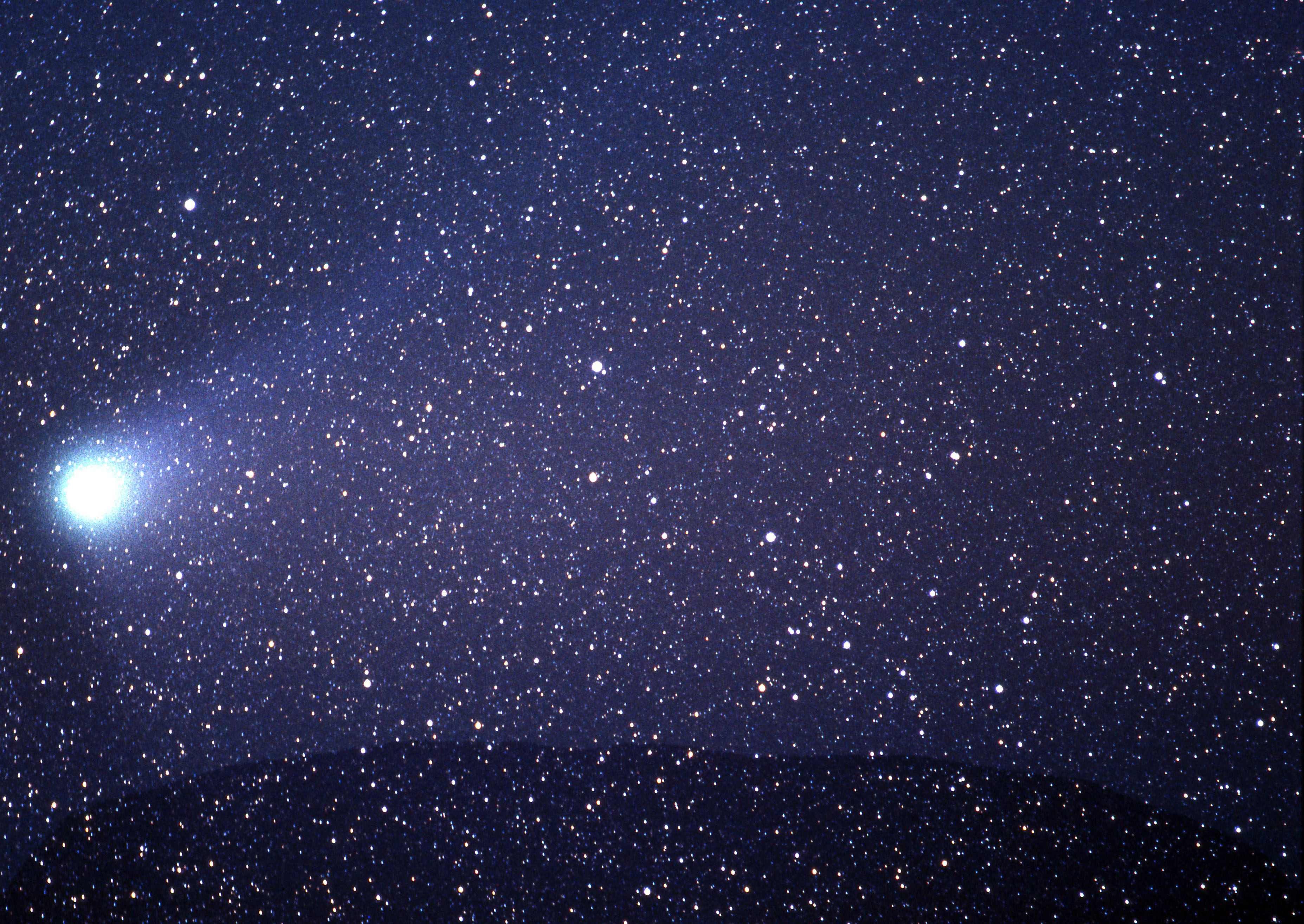
During these next several days, if you happen to be outside prior to the break of dawn and are looking up and glimpse a "shooting star," there's a good chance that what you saw was a fragment left behind in space by the famous Halley's Comet. For it is during the third week of October that the meteor display spawned by the debris shed by Halley reaches its peak: the Orionid meteor shower.
If the December Geminids and August Perseids can be considered ranking as the "first string" among the annual meteor showers in terms of brightness and reliability, then the Orionid meteor shower is on the junior varsity team.
This year they are scheduled to reach their maximum before sunrise on Sunday morning (Oct. 22). Orion, of course, is a winter constellation. At this moment, in early autumn, it appears ahead of us in our path around the sun, and as such has not completely risen above the eastern horizon until after 11 p.m. local daylight time. Several hours later, between 4 and 5 a.m., Orion will be high in the sky toward the south-southeast.
Related: Meteor shower guide: Dates and viewing advice
And this will be a very good year to look for these shooting stars, since the moon will be at first quarter (half) phase and will set at around 11:30 p.m. local daylight time on Saturday night, Oct. 21 and will not pose any hindrance at all for those watching for Orionids during their prime predawn viewing hours.
But to see the greatest number of meteors, don't look in the direction of the radiant, but rather about 30 degrees from it, in the direction of the point directly overhead (the zenith). Your clenched fist held at arm's length is roughly equivalent to 10-degrees, so looking "three fists" up from Betelgeuse, the star that forms Orion's left shoulder, will be where to concentrate your view.
Best times to watch

Want to see Orion or Betelgeuse? We recommend the Celestron Astro Fi 102 as the top pick in our best beginner's telescope guide.
Orionid visibility extends from Oct. 16 to 26, with peak activity of perhaps 15 to 20 meteors per hour coming on the morning of Oct. 22. Step outside before sunrise on any of these mornings and if you catch sight of a meteor, there's about a 75 percent chance that it likely is a by-product of Halley's Comet. The very last Orionid stragglers usually appear sometime in early to mid-November.
Get the Space.com Newsletter
Breaking space news, the latest updates on rocket launches, skywatching events and more!
The best time to watch begins from about 1 or 2 a.m. local daylight time until the first light of dawn (at around 5:45 a.m.), when Orion stands highest above the southern horizon. The higher in the sky Orion is, the more meteors appear all over the sky. The Orionids are one of just a handful of known meteor showers that can be observed equally well from both the Northern and Southern Hemispheres.
Typically, Orionid meteors are normally dim and not well seen from urban locations, so it's suggested that you find a safe rural location to see the best Orionid activity.
"They are easily identified ... from their speed," write David Levy and Stephen Edberg in "Observe: Meteors," an Astronomical League manual. "At 66 kilometers (41 miles) per second, they appear as fast streaks, faster by a hair than their sisters, the Eta Aquarids of May. And like the Eta Aquarids, the brightest family members tend to leave long-lasting trains. Fireballs are possible three days after maximum."
Undoubtedly this is connected in some way to the makeup of Halley's Comet.

Halley's Comet: Cosmic litterbug
Comets are the leftovers of the earliest days of the universe, the odd bits and pieces of simple gases — methane, ammonia, carbon dioxide and water vapor — that went unused when the sun and the planets of the solar system came into their present form. Meteoroids that are released into space from this cometary debris are the remnants of a comet's nucleus. All comets eventually disintegrate into meteor swarms, and Halley's is well into that process at this time.
These tiny particles — mostly ranging in size from dust to sand grains — remain along the original comet's orbit, creating a "river of rubble" in space. In the case of Halley's Comet, its dirty trail of debris has been distributed more or less uniformly all along its entire orbit. When these tiny bits of comet collide with Earth, friction with our atmosphere raises them to white heat and produces the effect popularly referred to as "shooting stars."
And Halley's Comet has left a legacy that is visible to us in the form of not just one, but two annual meteor showers. This is because its orbit closely approaches the Earth's orbit at two different places. One intersection point (alluded to by Levy and Edberg) is in the early part of May, producing a meteor display known as the Eta Aquarids. The other point comes right now, in the middle to latter part of October, producing the Orionids.

At this moment in time, Halley itself is nearing the far end of its long elliptical path around the sun, out beyond the orbit of Neptune. Its last visit through the inner solar system was in the winter of 1986. It will arrive at aphelion — its farthest point from the sun, 3.28 billion miles (5.28 billion km) away from our star — later this year, in early December. Thereafter, it will begin its long journey back toward the sun, due to return in the midsummer of 2061. If you were born any time after 1983, you probably have a better than 50-50 chance to catch it on its next return.
But for folks like myself — who will probably not be around when it returns — the Orionids will give us a chance to at least catch a view of some of the cosmic debris Halley has left behind in its wake.
If you plan on hunting the Orionid meteor shower and want to capture some images of your own, make sure to check out our guide on how to photograph meteors and meteor showers. And if you get a great shot of an Orionid meteor and would like to share it with Space.com's readers, send your photo(s), comments, and your name and location to spacephotos@space.com.
Joe Rao serves as an instructor and guest lecturer at New York's Hayden Planetarium. He writes about astronomy for Natural History magazine, the Farmers' Almanac and other publications.
Join our Space Forums to keep talking space on the latest missions, night sky and more! And if you have a news tip, correction or comment, let us know at: community@space.com.

Joe Rao is Space.com's skywatching columnist, as well as a veteran meteorologist and eclipse chaser who also serves as an instructor and guest lecturer at New York's Hayden Planetarium. He writes about astronomy for Natural History magazine, Sky & Telescope and other publications. Joe is an 8-time Emmy-nominated meteorologist who served the Putnam Valley region of New York for over 21 years. You can find him on Twitter and YouTube tracking lunar and solar eclipses, meteor showers and more. To find out Joe's latest project, visit him on Twitter.









